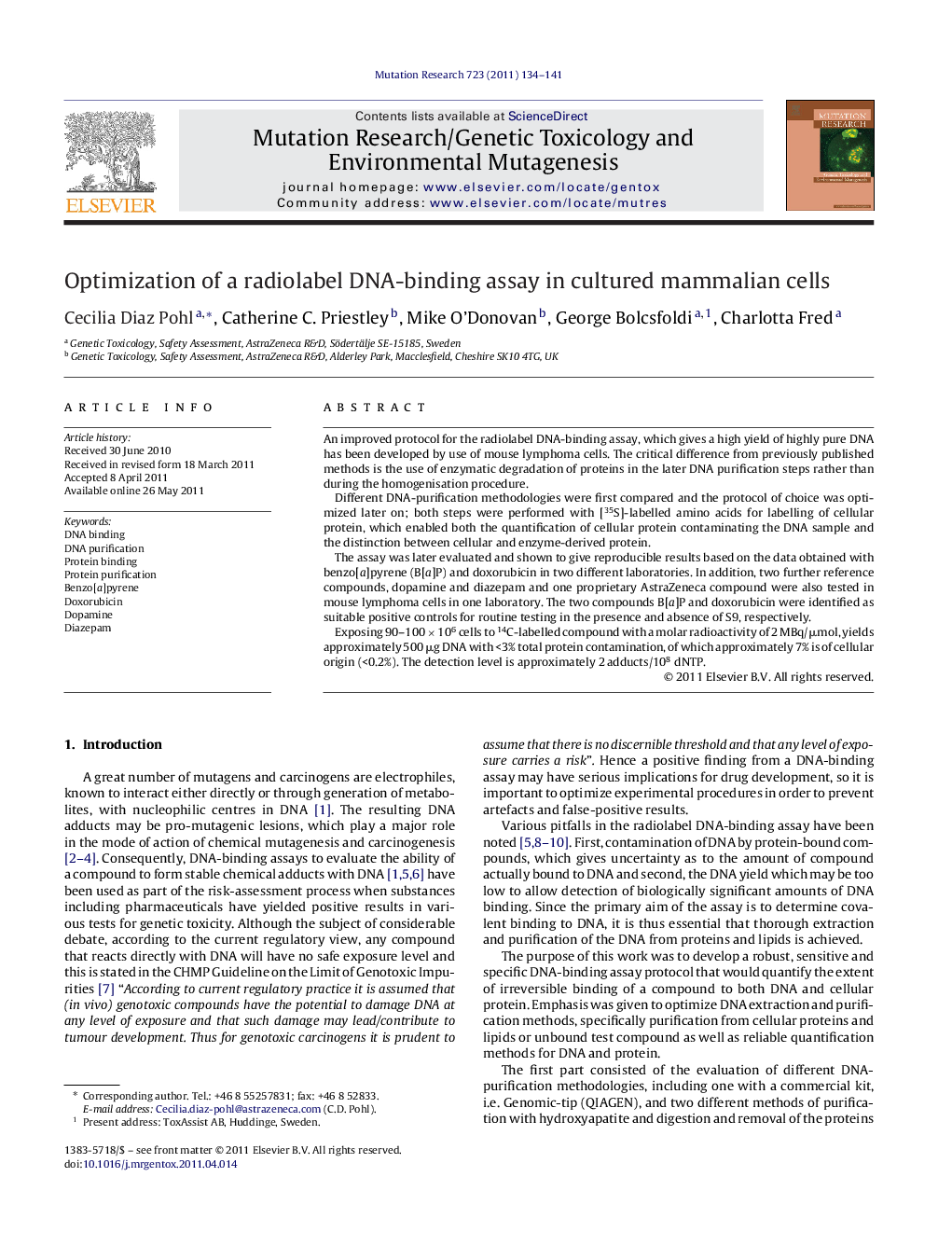| Article ID | Journal | Published Year | Pages | File Type |
|---|---|---|---|---|
| 2148324 | Mutation Research/Genetic Toxicology and Environmental Mutagenesis | 2011 | 8 Pages |
An improved protocol for the radiolabel DNA-binding assay, which gives a high yield of highly pure DNA has been developed by use of mouse lymphoma cells. The critical difference from previously published methods is the use of enzymatic degradation of proteins in the later DNA purification steps rather than during the homogenisation procedure.Different DNA-purification methodologies were first compared and the protocol of choice was optimized later on; both steps were performed with [35S]-labelled amino acids for labelling of cellular protein, which enabled both the quantification of cellular protein contaminating the DNA sample and the distinction between cellular and enzyme-derived protein.The assay was later evaluated and shown to give reproducible results based on the data obtained with benzo[a]pyrene (B[a]P) and doxorubicin in two different laboratories. In addition, two further reference compounds, dopamine and diazepam and one proprietary AstraZeneca compound were also tested in mouse lymphoma cells in one laboratory. The two compounds B[a]P and doxorubicin were identified as suitable positive controls for routine testing in the presence and absence of S9, respectively.Exposing 90–100 × 106 cells to 14C-labelled compound with a molar radioactivity of 2 MBq/μmol, yields approximately 500 μg DNA with <3% total protein contamination, of which approximately 7% is of cellular origin (<0.2%). The detection level is approximately 2 adducts/108 dNTP.
